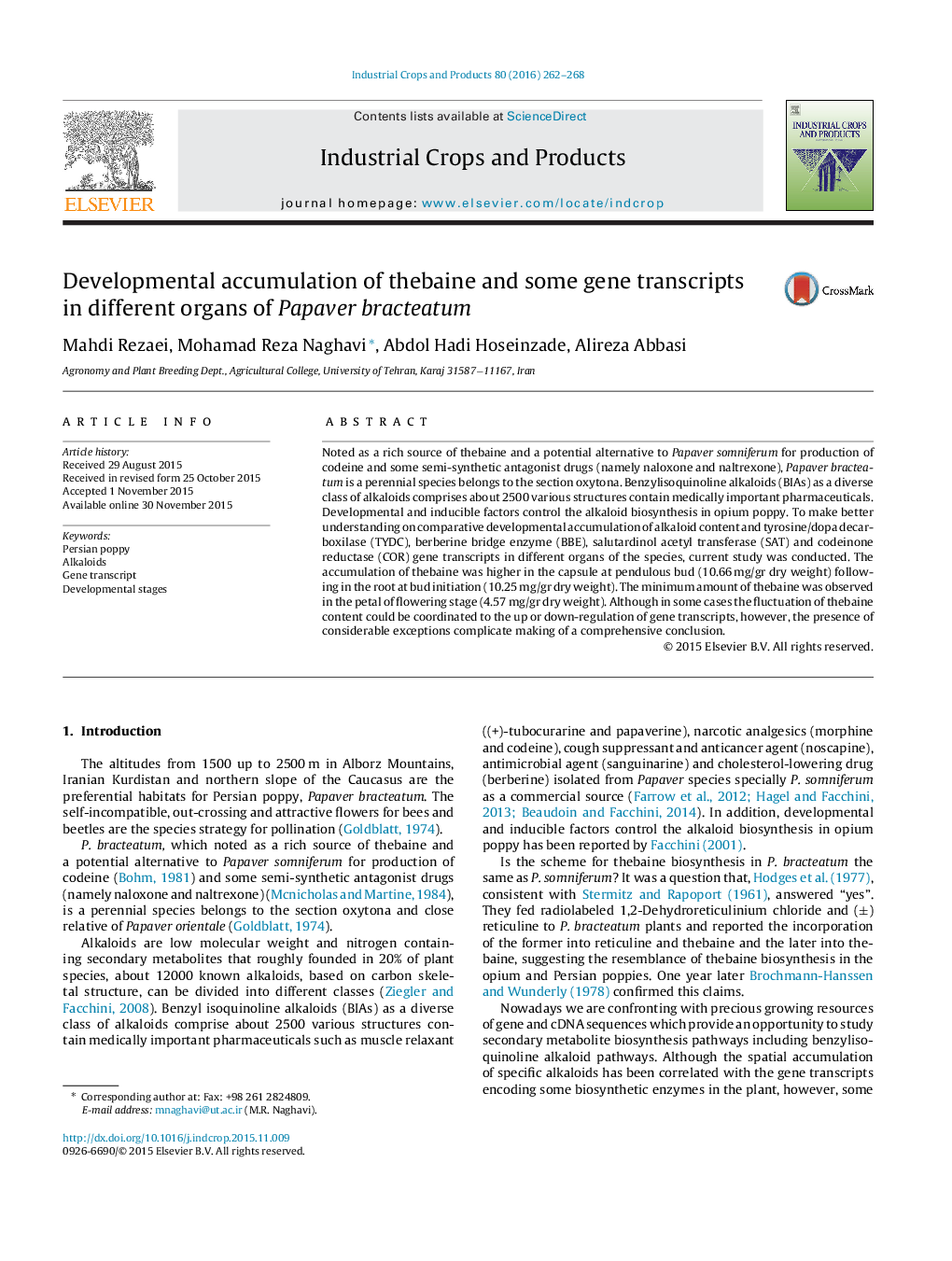| Article ID | Journal | Published Year | Pages | File Type |
|---|---|---|---|---|
| 4512577 | Industrial Crops and Products | 2016 | 7 Pages |
•The accumulation of thebaine in the roots and leaves of the plant were reciprocally related until flowering and afterward reduced both.•The lower part of the stems at bud initiation and leaves at pre-flowering stage had the uttermost quantity of COR transcripts.•Root reported as the most accumulating TYDC transcripts.
Noted as a rich source of thebaine and a potential alternative to Papaver somniferum for production of codeine and some semi-synthetic antagonist drugs (namely naloxone and naltrexone), Papaver bracteatum is a perennial species belongs to the section oxytona. Benzylisoquinoline alkaloids (BIAs) as a diverse class of alkaloids comprises about 2500 various structures contain medically important pharmaceuticals. Developmental and inducible factors control the alkaloid biosynthesis in opium poppy. To make better understanding on comparative developmental accumulation of alkaloid content and tyrosine/dopa decarboxilase (TYDC), berberine bridge enzyme (BBE), salutardinol acetyl transferase (SAT) and codeinone reductase (COR) gene transcripts in different organs of the species, current study was conducted. The accumulation of thebaine was higher in the capsule at pendulous bud (10.66 mg/gr dry weight) following in the root at bud initiation (10.25 mg/gr dry weight). The minimum amount of thebaine was observed in the petal of flowering stage (4.57 mg/gr dry weight). Although in some cases the fluctuation of thebaine content could be coordinated to the up or down-regulation of gene transcripts, however, the presence of considerable exceptions complicate making of a comprehensive conclusion.
